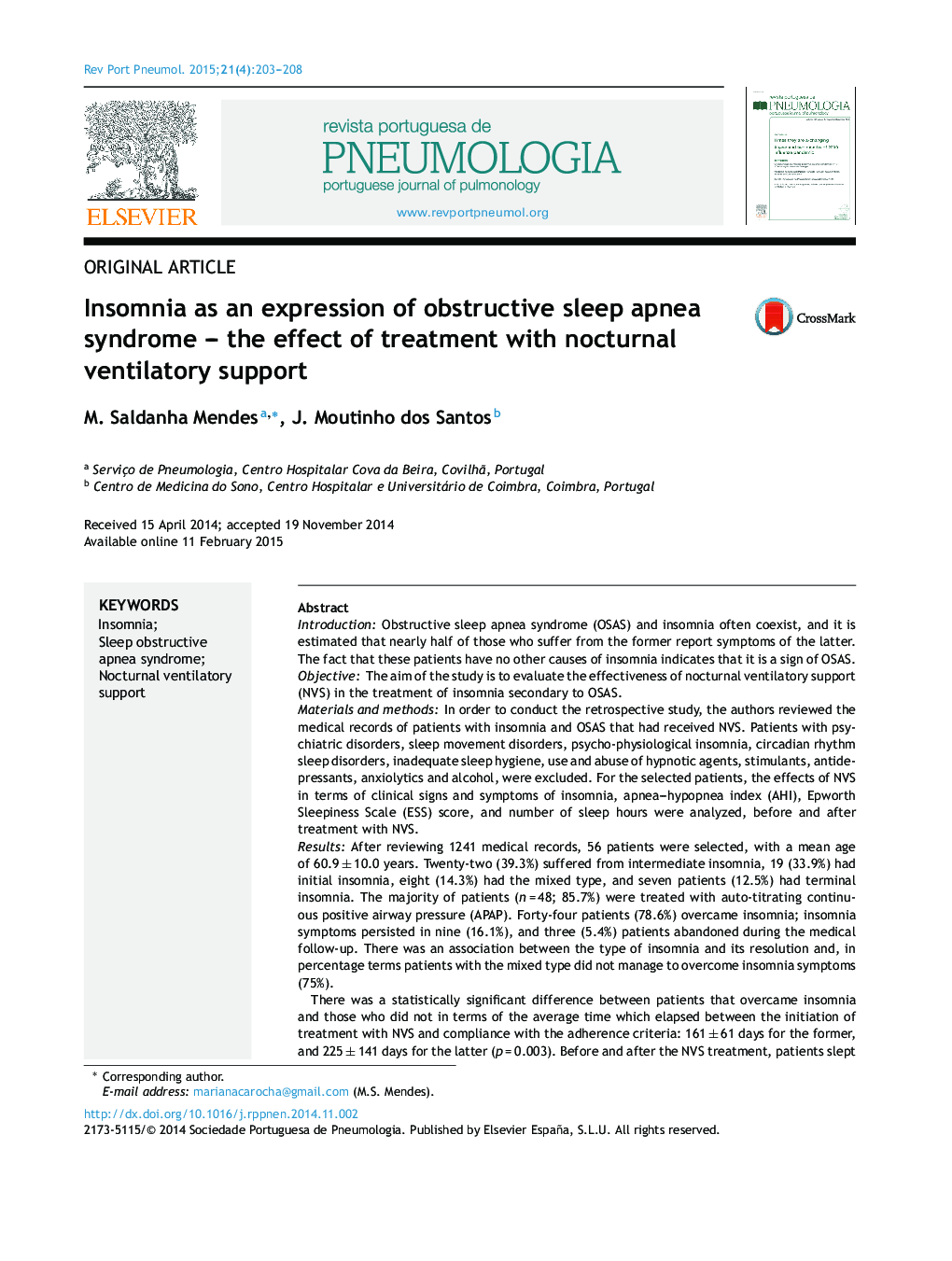| Article ID | Journal | Published Year | Pages | File Type |
|---|---|---|---|---|
| 4214701 | Revista Portuguesa de Pneumologia (English Edition) | 2015 | 6 Pages |
IntroductionObstructive sleep apnea syndrome (OSAS) and insomnia often coexist, and it is estimated that nearly half of those who suffer from the former report symptoms of the latter. The fact that these patients have no other causes of insomnia indicates that it is a sign of OSAS.ObjectiveThe aim of the study is to evaluate the effectiveness of nocturnal ventilatory support (NVS) in the treatment of insomnia secondary to OSAS.Materials and methodsIn order to conduct the retrospective study, the authors reviewed the medical records of patients with insomnia and OSAS that had received NVS. Patients with psychiatric disorders, sleep movement disorders, psycho-physiological insomnia, circadian rhythm sleep disorders, inadequate sleep hygiene, use and abuse of hypnotic agents, stimulants, antidepressants, anxiolytics and alcohol, were excluded. For the selected patients, the effects of NVS in terms of clinical signs and symptoms of insomnia, apnea–hypopnea index (AHI), Epworth Sleepiness Scale (ESS) score, and number of sleep hours were analyzed, before and after treatment with NVS.ResultsAfter reviewing 1241 medical records, 56 patients were selected, with a mean age of 60.9 ± 10.0 years. Twenty-two (39.3%) suffered from intermediate insomnia, 19 (33.9%) had initial insomnia, eight (14.3%) had the mixed type, and seven patients (12.5%) had terminal insomnia. The majority of patients (n = 48; 85.7%) were treated with auto-titrating continuous positive airway pressure (APAP). Forty-four patients (78.6%) overcame insomnia; insomnia symptoms persisted in nine (16.1%), and three (5.4%) patients abandoned during the medical follow-up. There was an association between the type of insomnia and its resolution and, in percentage terms patients with the mixed type did not manage to overcome insomnia symptoms (75%).There was a statistically significant difference between patients that overcame insomnia and those who did not in terms of the average time which elapsed between the initiation of treatment with NVS and compliance with the adherence criteria: 161 ± 61 days for the former, and 225 ± 141 days for the latter (p = 0.003). Before and after the NVS treatment, patients slept an average of 5.29 ± 1.37 and 6.37 ± 1.55 h per night, respectively (p < 0.001). Among the patients who overcame insomnia, six did not meet the treatment adherence criteria: five adhered more than 4 h/night in less than 70% of all nights (60.6 ± 3.2%), and one patient adhered less than 4 h in all nights (3.5 h/night).ConclusionNVS has proved effective in treating insomnia secondary to OSAS, and favorable results could be observed even in patients that did not meet the criteria of NVS adherence. Results suggest that all insomnia subtypes, except the mixed subtype, may derive from OSAS.
